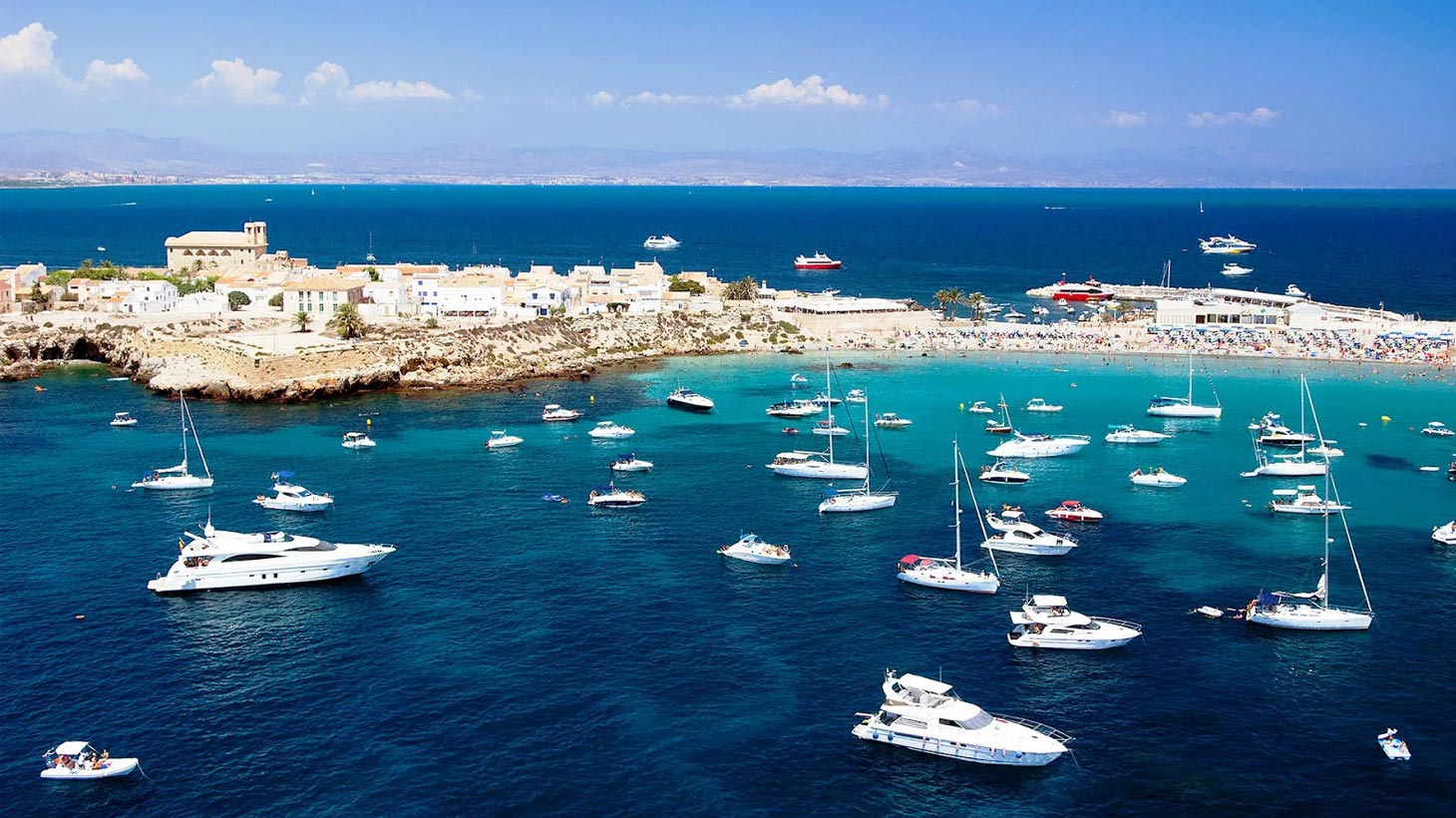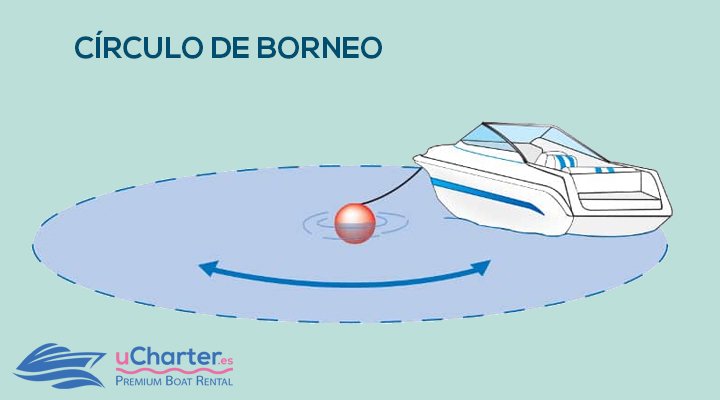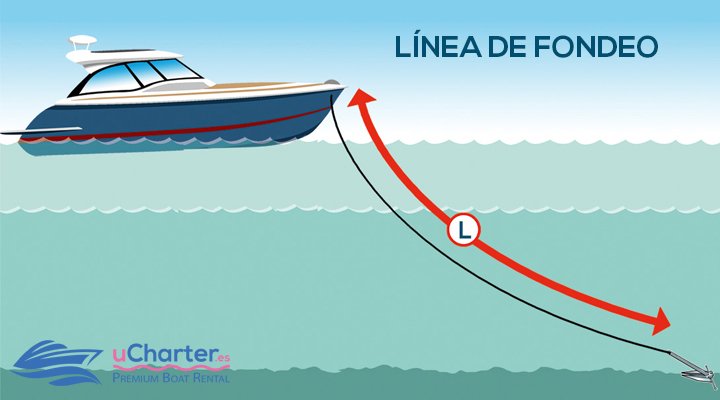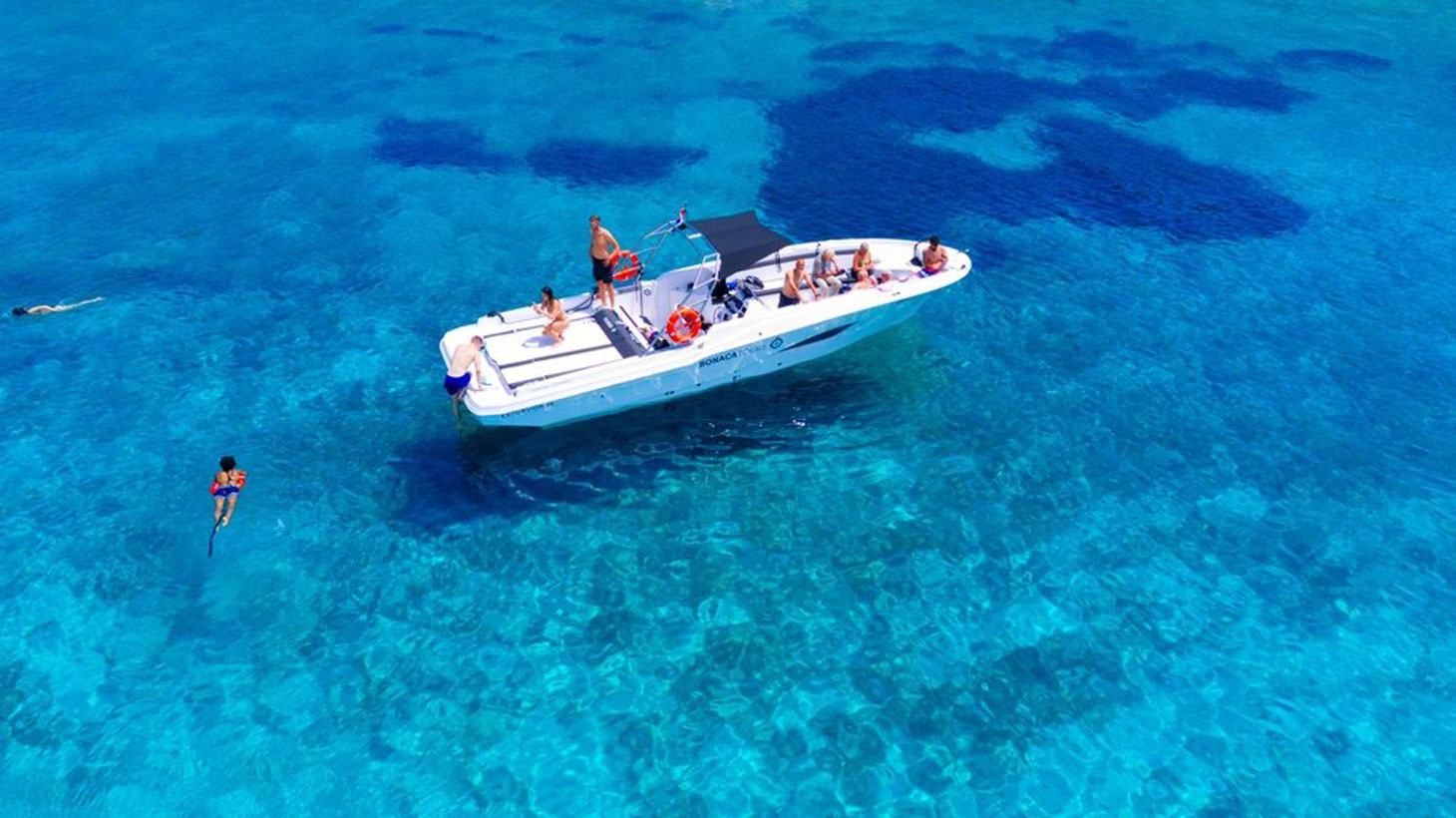
Posidonia
The Underwater Treasure of the Mediterranean
Posidonia is an aquatic plant found on the coasts of the Mediterranean and plays a crucial role in the health of our seas. It …

THE ANCHORING
Anchoring is one of the most important maneuvers we must perform on board the boat during our navigation day. During the day, we will spend most of the time in coves and beaches, so we have to make sure that we have correctly "thrown" the anchor. Otherwise, what in theory should be a wonderful vacation day can turn into a nightmare.
THE WEATHER
The first thing we must consider is the weather conditions we have at that moment and those we will have while anchored. We should always seek shelter from both the wind and the waves. Therefore, it is essential to have a clear weather forecast. We can obtain information about it in apps such as Windy or MeteoMarine.
CHOOSING A GOOD ANCHORAGE
Once a sheltered area is chosen, we must find an appropriate rode. An area with a soft bottom and with an adequate depth. As we sail with a motor, with little draught, we can approach the coast more.
Remember that anchoring is prohibited in access channels to ports, coves, and beaches (if they are marked), and inside properly marked swimming areas. If the beach is not marked, the safety distance would be 200 meters. At all times, we must respect these areas, both for our safety and that of others.
It is essential to note that it is entirely forbidden to anchor on seagrass meadows. These endemic Mediterranean marine plants are large producers of oxygen and provide refuge for a large number of marine species. Unfortunately, in recent years their population has been significantly reduced due to indiscriminate anchoring.
ANCHORING MANEUVER
Having a clear area and the type of seabed, it is time to anchor. To do this, we must have the anchor untied and suspended, ready to drop it. The steps to follow to perform a good anchoring are:
1. With the bow to the wind and with sufficient power to have control, we visualize the place where we want the boat to be placed. We advance, with little power, a few meters from the place where we have chosen to anchor, controlling the depth and the distance with the other boats.
2. Prepare the anchor, its chain, and the rope well, so that when we throw it into the sea, we have no problem.
3. Once the place is chosen, and we are already positioned a little further ahead of where we want to stay, we release the anchor slowly.
4. While we drop the chain, we are without any gear until the anchor and a little chain touch the seabed. Once they reach the bottom, we give a little reverse with the engine so that the anchor is well stuck in the bottom, and the chain is aligned, without piling up.
5. We gradually release the necessary meters of chain so that it is always tense and in line with the anchor. With good weather, we will release between three and four times the depth of the depth sounder we are in, and with bad weather or dubious bottoms, between five and six times the depth.
6. Once anchored, we can check that the boat is not drifting by observing the movement of the anchor line. If it is constantly tense and vibrating, it means that the anchor has not caught, and the boat is moving backward. On the other hand, if we see that the chain is constantly tensing and relaxing (acting like a spring), it means that the anchor is well stuck.
7. We must make sure that we have left enough clearance distance with the nearby boats and take two lines of sight (references) to the coast, one on each side, or we will put some alarm for depth or dragging, to make sure that the boat is not drifting.
8. One of the things to watch out for when anchoring is if the wind direction changes. We must take into account the vessel's swing (the circular movement that a vessel makes around the anchoring position. The center of this circle is given by the anchor rooted to the bottom, and the swing radius is practically equal to the length of the anchor chain plus the boat's length). We must make sure that everything is clear within this circle.
9. During the summer months, it is practically impossible to have as much space in a cove or on a beach. There will surely be many boats closer than we would like. Therefore, in the event of a change in wind, we must be aware of the swing of other boats, as not all will turn at the same time.
10. Once we see that the boat is not dragging and the swing circle is safe (we have no boats or rocks nearby that we could collide with), we can turn off the engine and take out the fenders.
11. Under no circumstances will we stop monitoring the boat while it is anchored, as in the event of negligence, the insurance will not cover the damages.
12. The anchoring maneuver is not a difficult one, but it is important to follow the steps described. If we are sure that we have made a good anchoring, we will not be constantly worrying about whether the boat is dragging or colliding with other boats and we will enjoy a fantastic day on the sea peacefully.


LIFTING THE ANCHOR
This maneuver does not take as long as the previous one, but it is important that the crew is attentive, and that there is at least one person on the bow and another at the helm.
1. We will turn on the engines, checking that there is no swimmer near us.
2. We check that everything is in order, that the swim ladder is in place and that there are no objects such as towels or diving goggles that may fall into the sea once we start moving.
3. We will ask someone to help us from the bow and indicate where the chain is coming from and where the anchor is located, to assist us with the helm and lift it with less resistance. We will only hoist (lift) the anchor when we are directly above it, never letting the windlass exert more force than necessary, as it can be damaged.
4. We will retrieve the last few meters more slowly so that the anchor does not hit the boat's hull. Once it is up, we will secure it, retrieve the fenders, and set course for our destination.


Posidonia is an aquatic plant found on the coasts of the Mediterranean and plays a crucial role in the health of our seas. It …

Maritime terms are special due to their historical origins and unique nature within the context of navigation and the sea. These terms have a …

Are you thinking of organizing a boat trip with friends or family? It's a great idea! But before embarking on this adventure, it's important …